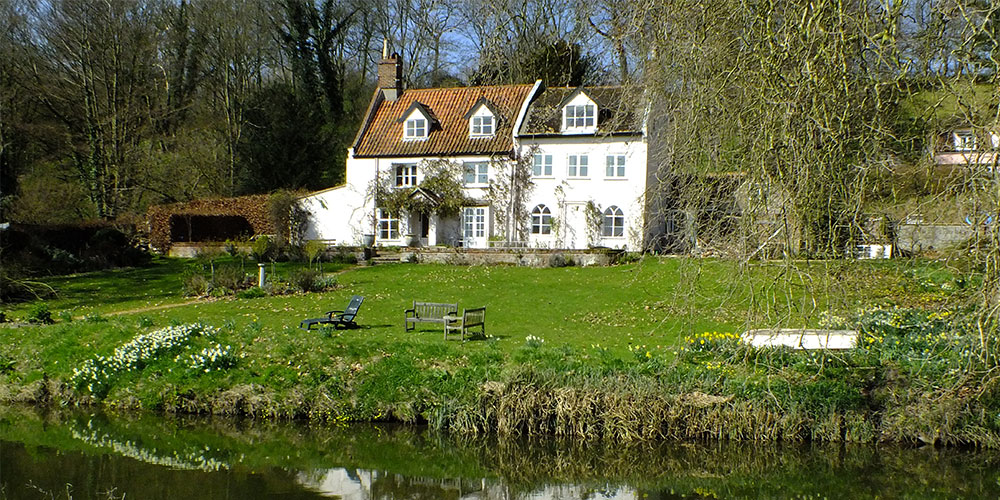A site at the foot of the Vineyard Hills facing across the river to Outney Common, was developed in 1734 as a spa by John King, a Bungay apothecary. He had identified a natural spring of water there which he believed could be beneficial for a number of ailments. Cold water health treatment had become fashionable in the Georgian period, when it was considered that both drinking the pure mineral water, and bathing in it, was remedial.
John King advertised his newly built resort in the Gentleman’s Magazine in 1734:
“Mr. King, apothecary in the pleasant town of Bungay, in Suffolk, has finished after Sir John Floyer’s plan a cold bath there, in a delightful situation and healthful air, everything is provided for the reception of such gentlemen and ladies as shall be advised, either to use the cold bath or mineral waters , of which there is an excellent sort in that place.”
Sir John Floyer was an eminent physician who had written a number of medical books which advocated the benefits of cold-water bathing. The waters were considered particularly efficacious for the cure of rheumatism. There were also hot baths provided for those of a delicate constitution who might suffer from cold temperatures.
John King also provided accommodation in an inn near the site, where patients could stay during a course of treatment. It became well patronised by the gentry, who enjoyed the social benefits as well as the medical care.
Although the Bath House was actually across the river in Ditchingham, King made sure that it was accessible from Bungay by providing a carriage track and bridges from Outney Common, and also sedan-chairs for the conveyance of ladies.
The Orders to be Observed at the Bath make interesting reading:
No man shall be permitted to immerse in the Bath without putting on a pair of linen Breeches. (This was at a time when men would usually bathed naked in the rivers or sea).
No woman shall be present when a man is bathing (and the same rule applied to men when women were bathing).
Such persons as make use of the Bath for infirmities to pay One Shilling every time; and such as bathe for pleasure to pay Sixpence.
No smoking or drinking allowed in the Bath Room at any time.
In his book that he published to promote the resort in 1737, John King describes individual successful case studies including the following:
“Roger Hawes a Taylor at Bedingham in Norfolk, from a weakness fixed upon his ankles and knees became incapable of walking, but after a Fortnight’s Cold Bathing, he so well recovered the use of his Legs, as to run away without paying for his immersions.”
The Spa flourished for a number of years, and then closed towards the end of the century. In 1928 Lilias Rider Haggard, daughter of the celebrated author Sir Henry Rider Haggard, acquired the converted inn, which was by then situated on the family’s estate. In her published diaries in the 1940’s, she describes the house and the Outney Common landscape, and the many beauties of nature she observed there.

